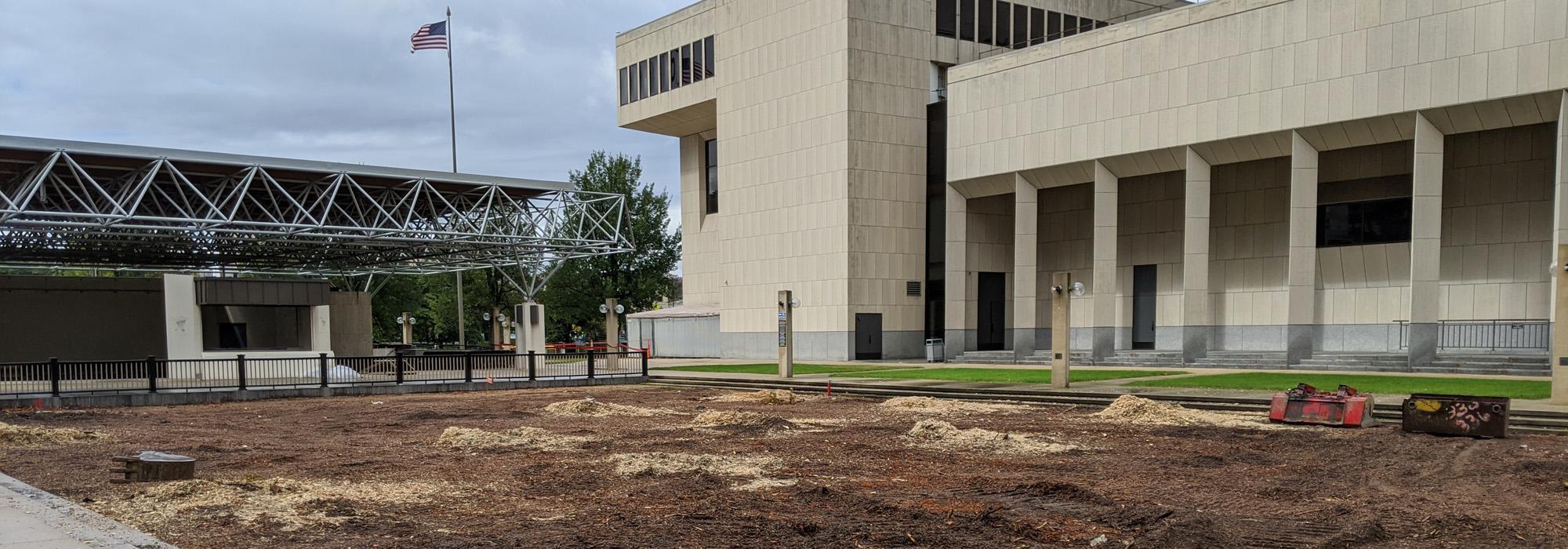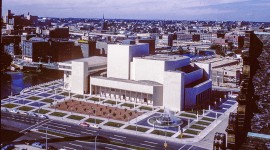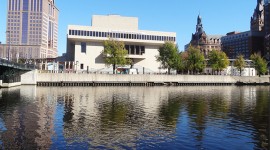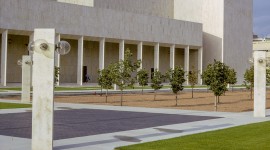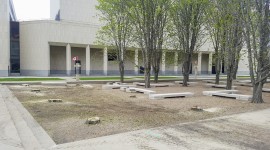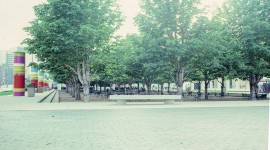Devastation at the Kiley-designed Marcus Center
The centerpiece of Dan Kiley’s design for Milwaukee’s Marcus Center for the Performing Arts is a grid of 36 horse chestnut trees … On the weekend of September 26, 2020, the site was clear-cut.
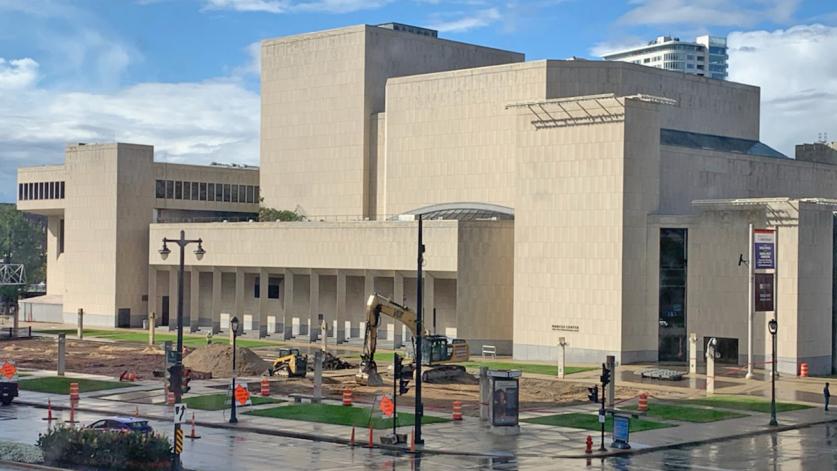
Reaction has been swift and sharp: “saddened beyond words, “heartbreaking,” and “grotesque.”
The Cultural Landscape Foundation (TCLF) listed the Marcus Center as a Landslide site on December 17, 2018, ten days after a proposed renovation plan was unveiled that would eradicate the Kiley design. There followed months of advocacy and public hearings. Then on the Saturday before Mother’s Day in 2019, roughly half of the trees were cut down. The issue then went dormant with the center announcing in December that Kendra Whitlock Ingram had been hired as the new president and chief executive officer. Now after Ingram has been on the job for several months, the renovation is underway.
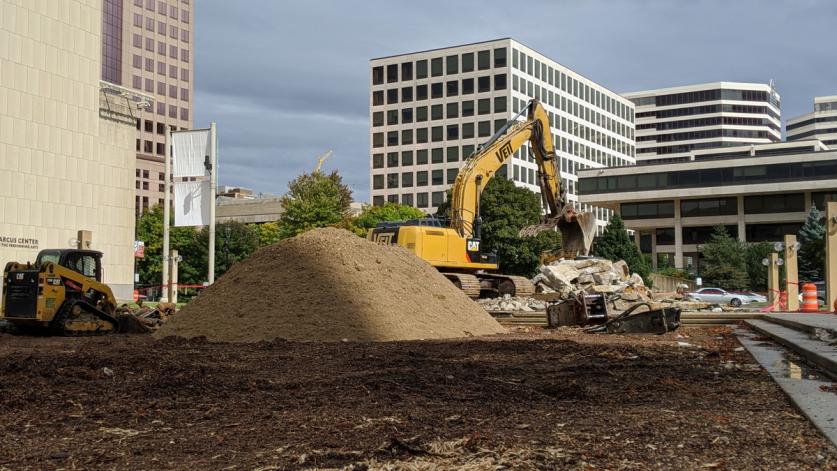
It was a sad end to a project that began in the 1960s when Kiley and Chicago architect Harry Weese were working together on the design of an arts complex at the University of Wisconsin, Madison. Weese was also commissioned to design the Milwaukee Performing Arts Center (now the Marcus Center for the Performing Arts) at 929 East Water Street in Milwaukee, and he asked Kiley to join him on the project. This would be a continuation of a long-term working relationship that included the Rochester (New York) Institute of Technology, Reed College in Portland, Oregon, the First Baptist Church in Columbus, Indiana (now a National Historic Landmark), Grant Park in Chicago, Illinois, and Forest Park Community College in St. Louis, Missouri.
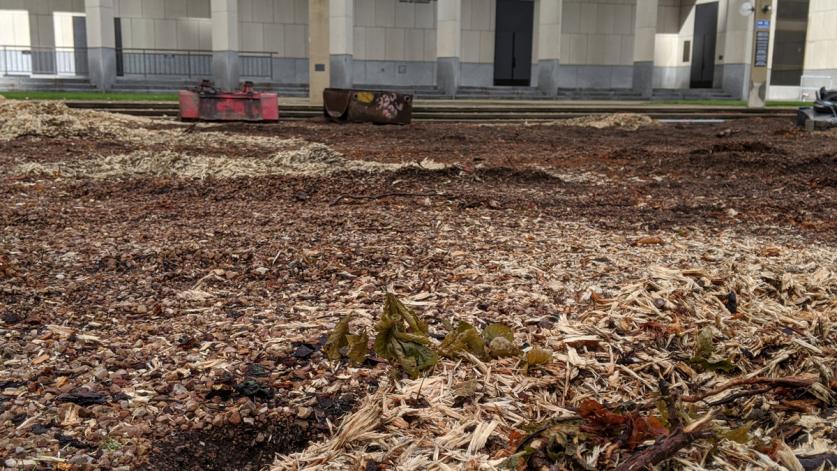
Kiley’s plan for the center’s grounds, located beside the Milwaukee River, called for a grid of grass rectangles set within the pavement surrounding a central, trapezoidal plaza. That central space, sunken three steps below the adjacent walkways (recalling the better-known South Garden at the Chicago Art Institute, designed and constructed from 1962 to 1967), mimicked the conversation pit of the famous Miller House and Garden, which Kiley had completed with architect Eero Saarinen in Columbus, Indiana, in 1957 (and which became a National Historic Landmark in 2000). The plaza was the site for the grid.
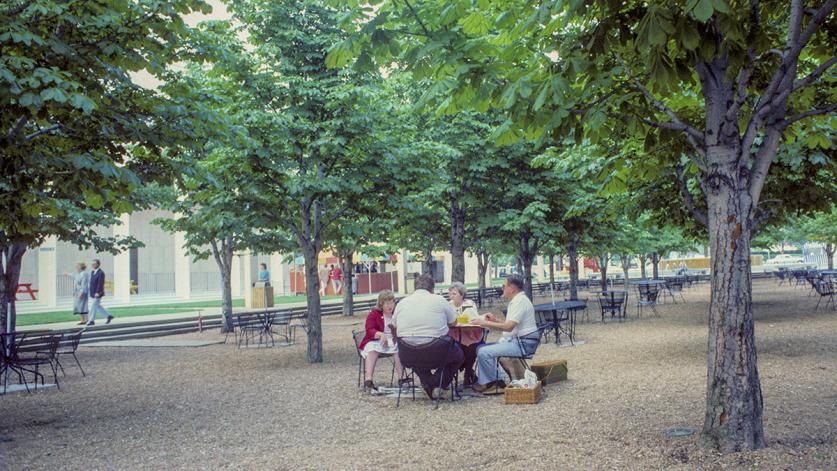
The arrangement of the horse chestnuts also speaks directly to Kiley's time in Europe, specifically in Paris, France, where, as has been well documented, he was influenced by the garden of the Tuileries (also planted with horse chestnut trees), the imperial palace on the right bank of the Seine. What Kiley recognized there—and translated to great advantage in Milwaukee—was "a language of form used to conduct the movement of daily life…a language with which to vocalize the dynamic hand of human order on the land—a way to reveal nature's power and create spaces with structural integrity,” as he put it. He would also recall that his experience at the Tuileries opened his eyes to "the spatial and compositional power of the simplest of elements—this was no less than living architecture." The Performing Arts Center’s plaza in Milwaukee is a virtual illustration of these thoughts and words.
News of the demolition prompted Virginia Small, a veteran Milwaukee journalist who writes extensively about environmental justice and the public realm, including historic landscapes, to share the following poem:
Meet Me in the Grove
By Virginia Small
With Gratitude to Daniel Urban Kiley, 1912-2004
1.
We meet in the grove,
sit beneath budding horse-chestnut trees,
sketch in the shadow of skyscrapers,
drum the djembe, strike a chime.
As tiny leaves flutter,
the poetry of this place resonates:
Alice Walker, Mary Oliver,
Jane Jacobs, Frederick Law Olmsted,
Vel Phillips, Frank Zeidler.
This terrain their shoulders,
this canopy their mantle.
2.
As night envelops the grove,
we sway to plaintive riffs.
We forget summer is fading.
our limbs keeping time.
3.
Spreading a harvest feast,
we circle within this square,
recall those who bequeathed this place to us
long before we breathed.
We gather fallen chestnuts,
currency of kindreds
worthless to those who covet this land for mammon,
beyond measure to us.
4.
Meet me in the grove
after the first white flakes fall.
Let’s stroll through symmetrical sentinels,
wait for what springs from silence,
for what endures beyond ancient trees,
for what lingers after a poem’s last word.



